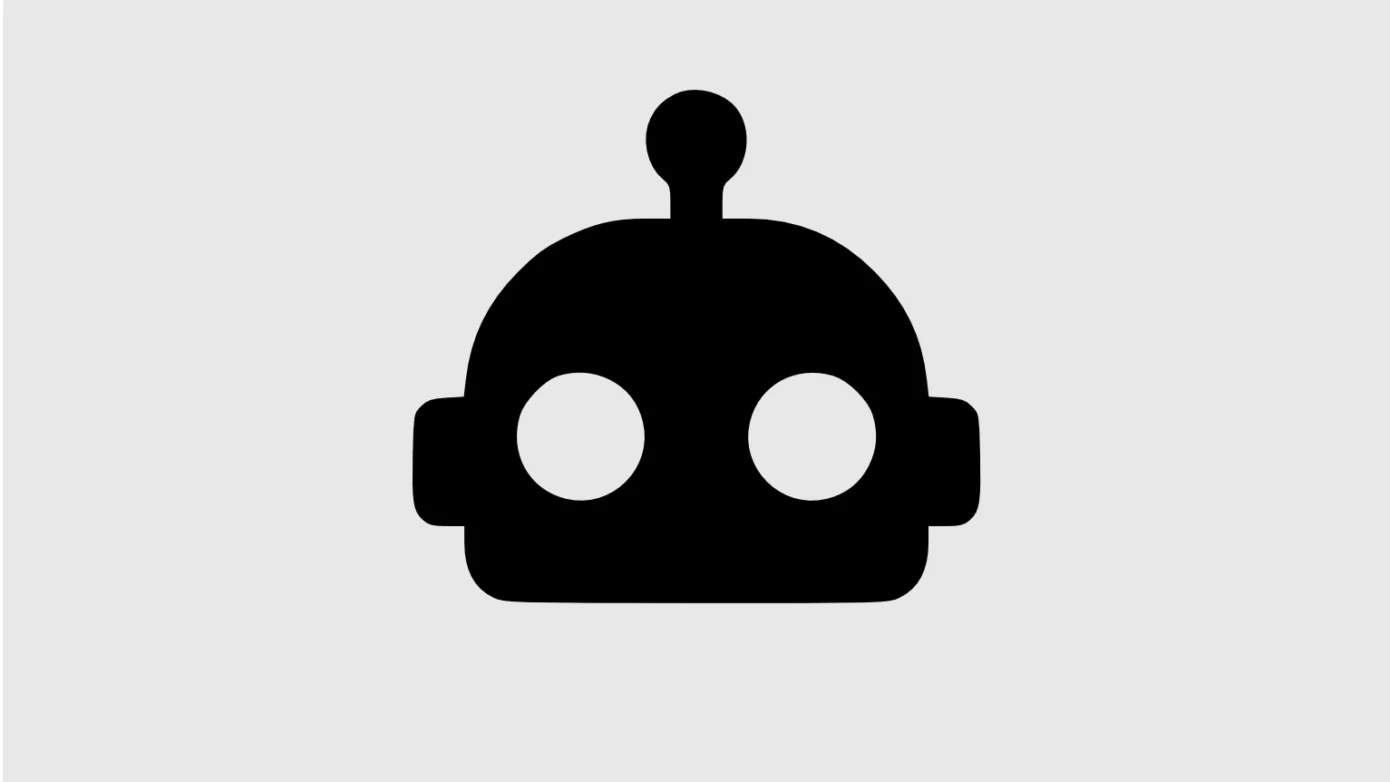After scrolling through a handful of company websites, I’ve noticed that they’ve all started to speak with the same bland voice. Words like “streamlining,” “capabilities,” and “synergy” are everywhere. Writing with AI is as if someone hit copy-paste on the entire internet. There used to be quirks and character to each brand, which once set them apart, but with the rise of AI, all brands are blurring together in a mush of capitals and heartless phrases. And we all know, the growing reliance on AI is the reason this is happening.
And this reliance isn’t slowing down. It’s driven by a mix of laziness, time pressure, and budget cuts. Something fundamentally human is being lost, and on top of that, it’s giving AI a bad rep. Because at the core, AI is not the villain of this story, far from it. But when brands use it as a shortcut for identity, it all goes wrong. What should feel human and distinct ends up sounding like it was written by a committee of robots on a deadline. Bland and forgettable.
So the question is this: why is this happening, what does it cost us, and how do we use AI well, without trading away our brand’s soul in the process?

The rise of the AI echo chamber
AI has change the branding game in many ways. It can summarise a hundred research papers before you’ve finished your first coffee. It predicts consumer behaviour, and helps companies stay consistent across platforms. But the bit companies are clearly missing is that AI is a master of the average and using it carelessly will inflict damage to brands.
AI is trained on what already exists. Which means when you ask it to write your about page, your campaign copy, or your LinkedIn updates, it doesn’t invent it from a creative point of view. Instead it copies what is already out there and It calculates the most statistically “appropriate” thing to say. And that’s how we end up with a digital landscape full of “cutting-edge solutions” and “transformative innovation.” It’s safe and it sounds smart, but it kills your distinctiveness.
This is a fundamental threat to what a brand voice is supposed to achieve. Your voice is about differentiation and most importantly creating an emotional connection with your audience. When every brand starts to sound alike by writing with AI, that connection gets lost. The quirks and the stories, the bold statement and great personalities that make a brand memorable are sanded down in favour of what’s safe and statistically common. This results in a digital landscape where brands blur together, and consumers are left with nothing to stand behind.

Why AI will never beat a human moment
Human connections are messy. It’s built on inside jokes, shared glances, old stories, mispronunciations, eye-rolls, and awkward silences that turn into years-long bonds. As social animals, we’re hardwired to seek out closeness, belonging, and shared understanding, needs that are as fundamental as food or shelter. As we all know, there’s something life-affirming about feeling seen, heard, and valued by another person, whether it’s the warmth of a friend’s laughter over coffee or the quiet solidarity of a colleague who just “gets” you. These moments of realness nourish us in ways that algorithms and AI simply can’t replicate
AI doesn’t feel embarrassment. It doesn’t light up when someone laughs at a joke you thought only your dog would appreciate. It doesn’t cringe at its own ideas. It can’t tell your story because it’s never lived it. And that lack of lived emotion shows, especially in your brand voice.
It’s simple science. Strong human connections release oxytocin, the bonding hormone. That kind of response only happens when something feels real. A well thought of brand voice, one that reflects real people and stories, taps into this. An AI-crafted one doesn’t come close.
Sameness is the enemy of your brand
Now you understand that we need human connections, you can see how sameness is the enemy of your brand’s voice. If you want to create a sense of trust and give your customers a reason to be loyal to you, you have to stay away from writing with AI that only creates empty words. You have to be real with them to create a bond that will last.
Take a SaaS company for example with the headline: “Streamlining digital transformation with robust, scalable solutions.”. What does this mean? And how many of them have the exact same line? There’s no story nor personality, just meaningless overused buzzwords. When brands let AI take the wheel (which they do too often), they are losing the very thing that makes them worth remembering.
The problems that arises:
- Loss of differentiation
If your competitors use the same AI tools and templates, your voice fades into the background. - Erosion of trust
Audiences aren’t stupid. They can spot generic, AI-generated copy a mile away. It feels impersonal and insincere. - Missed emotional resonance
You miss your shot at emotional connection, the thing that keeps people coming back.
No one remembers the brand that talked about “robust, scalable solutions.” Everyone remembers the one that told you how their co-founder built the first version of the product on a Nokia brick phone while hiding in their nan’s conservatory during lockdown.
The rise of AI-led sameness is costing brands more than they realise:
- 67% of consumers say they’re more loyal to brands that feel authentic and unique (Edelman, 2024).
- 80% of marketers now use AI to create content — and 55% admit they’re worried their voice is disappearing.
- In a Forbes study, “loss of unique voice” was named one of the top fears around AI in branding.
So yes, we’re saving time. But we’re also slowly deleting the parts of our brands that people actually care about.
The right way to use AI: assistant, not author
Look, I’m not here to start an AI bonfire. I use it all the time. Mine’s called Betty. She’s polite, overly formal, and way too agreeable. Basically the opposite of me. But she’s useful, she gives me structure when I’m lost, ideas and new perspectives, and a decent starting point when I’m stuck. And that’s the key: starting point.

I recommend using AI wisely, and never let the 5 seconds spitted out content be your final word. The key is to treat AI as an assistant, not an author. Use it to generate ideas, outlines, or first drafts. Let it help with research, data analysis, and consistency checks. But always, always rewrite, refine, and inject your own stories, jokes, and quirks. Regularly check your content for overused phrases and clichés and please, delete all those capitals.
Blend data with intuition, let AI check out trends and insights, but trust your gut when it comes to what feels right for your brand. Protect your weirdness, the things that make your brand unique, whether it’s your founder’s story, your team’s sense of humour, or your regional slang. AI can’t fake these. Use AI for consistency, not creativity. Let it help you stay on-brand, but don’t let it decide what your brand is.
AI (unlike humans) lacks:
- Cultural context
It doesn’t know your company’s inside jokes, origin story, or the subtle cues that matter to your audience. - Emotional depth
It can mimic empathy, but it doesn’t feel it like we do. That gap is noticable, especially in sensitive or high-stakes communications. - Historical perspective
Great brands build on their own history and values. AI, trained on the present, misses the richness of the past.
Practical steps for reclaiming your brand voice
If you’re blushing reading this article and admit that you’re guilty of writing with AI too much and making your brand sounding like everyone else, there are concrete steps you can take to reclaim your brand’s voice.
1. Start by creating or reviewing your branding strategy
Your branding strategy should hold the heart of who you are, your values, beliefs, mission, vision, and the way you speak. It’s the blueprint for how your brand shows up in the world. That’s what you should be drawing from, not defaulting to AI.
What sets you apart? What do you stand for that your customers can actually rally behind?
If you’ve let that strategy collect dust, it’s time to revisit it. And if you’ve never built one? Well, now’s the moment. You can’t expect your brand to feel human if you’ve never defined what being you really means.
2. Work with real writers
Writers aren’t going extinct because of AI, instead yhey’re evolving. A good one doesn’t just “write content”, they capture what makes you you. Find someone (or a team) who gets your voice and knows how to push it forward.
3. Gather feedback from your customers
Your customers know how you sound, or at least, how you should. Ask what they think. If they can’t tell you what makes you stand out, you’ve got work to do.
4. And at last, celebrate the odd stuff
Whether it’s a regional phrase, an inside joke, or a bold opinion, put it front and centre. These are the things AI can’t replicate, and they’re what make your brand worth remembering.

The future: hybrid branding, not autopilot
The future belongs to brands that blend AI’s speed with human guts and storytelling.
AI will get smarter, but it will never be you. It will never replace the human authenticity of a founder’s story told on stage, or the rhythm of a team Slack thread at 11pm during crunch time. Those things will never be replaced by AI. If you care about being remembered, being trusted, or being loved, then sound like someone worth listening to.
So no, if it wasn’t clear by now, don’t let AI run on autopilot for your brand.
Conclusion
Resist the temptation of fast and cheap. Use AI for insight, for consistency, but never let it create your brand that is your fingerprint. Don’t let it be washed away in a sea of “streamlining” and “capabilities.”
The same rules that make for a meaningful life apply to your brand: be bold, be real, and be you. Because honestly, who wants to live (or buy from) a world stripped of colours, surprises, and fireworks?
Are you’re ready to reclaim your brand’s voice?

Leave a Reply